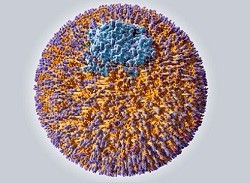Section edited by Nehal N. Mehta and Tommaso Angelone

This section aims to speed mechanistic understanding, development of novel diagnostics and potential therapeutic targets within cardiovascular, metabolic diseases and lipoprotein diseases. The section is open to experiments involving cellular models, animal models, observational studies and clinical trials that are distinguished for their novelty in approach, design or indication, timeliness, and unique ability to translate laboratory concepts from the bench to the bedside.
Highest priority will be given to those manuscripts which are specifically focused on cardiovascular, metabolic and lipid disorders which enrich understanding of disease mechanism, novel therapeutics and state-of-the-art scientific technique.